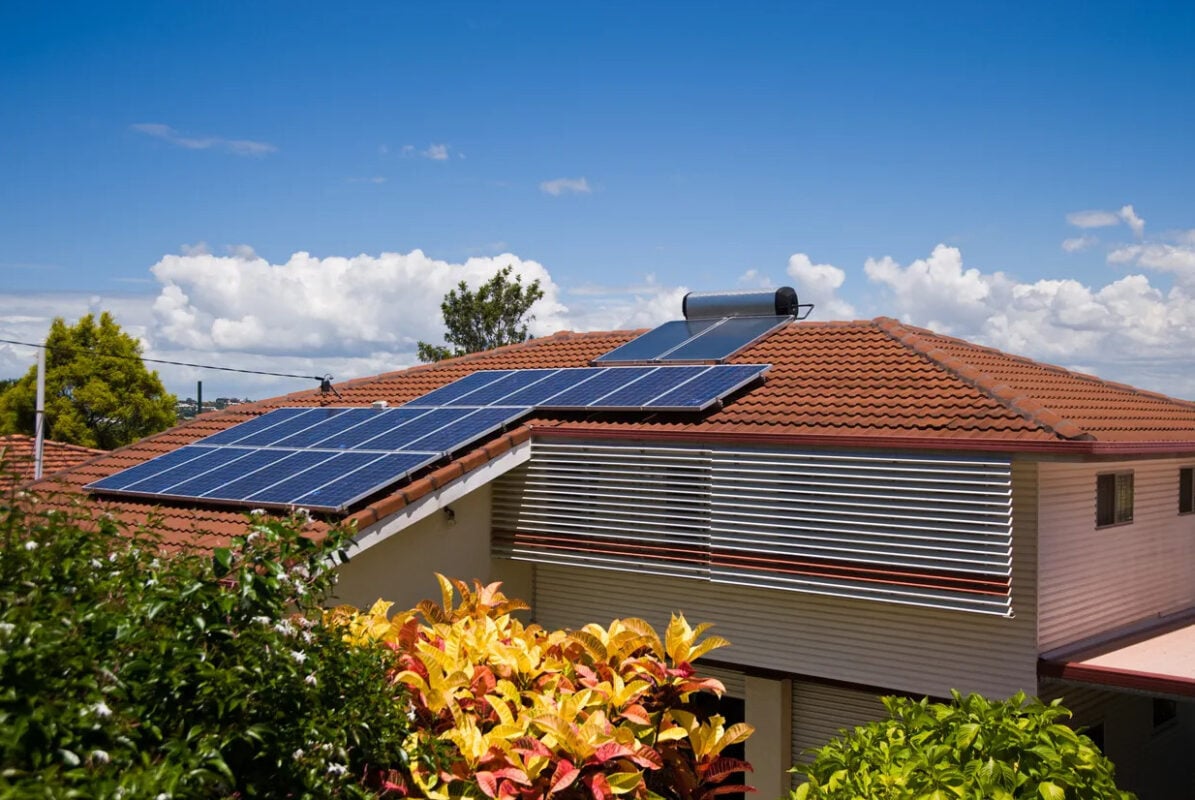Photon Energy and R.Power Renewables announce hybrid solar power system in Poland – Inspenet

Report on the Strategic Optimization of Poland’s Inaugural Hybrid Solar and Battery Storage System
1.0 Introduction: Advancing Sustainable Energy in Poland
A strategic agreement has been established between Photon Energy Trading PL and R.Power Renewables to optimize the first hybrid photovoltaic and battery energy storage system (PV + BESS) in Poland. Located in Nehrybka, this initiative marks a significant milestone in the nation’s energy transition, directly contributing to Sustainable Development Goal 7 (Affordable and Clean Energy) and SDG 13 (Climate Action) by enhancing the integration of renewable energy sources into the national grid.
2.0 Project Scope and Infrastructure Innovation
The Nehrybka project represents a critical advancement in developing resilient and sustainable infrastructure, aligning with SDG 9 (Industry, Innovation, and Infrastructure). The core objective is to improve the flexibility and stability of the national electricity system through the synergistic operation of solar power generation and smart energy storage.
- Asset: Hybrid Solar and Battery Storage System (PV + BESS).
- Location: Nehrybka, Podkarpackie region, Poland.
- Primary Goal: To pioneer a model for integrating variable renewable energy sources efficiently.
3.0 Operational Framework and Market Integration
The agreement outlines a sophisticated operational framework for managing the hybrid asset. This partnership is a key example of SDG 17 (Partnerships for the Goals), leveraging combined expertise to achieve sustainable outcomes.
- Energy Flow Management: Photon Energy will manage real-time energy flows between the solar plant, the battery system, and the national grid.
- Market Participation: The company will act as a balancing party and ancillary service provider, enabling the asset to participate in multiple energy markets, including the spot and balancing markets.
- Grid Stabilization: During periods of peak solar generation, excess energy will be stored in the battery system. This energy can be released during high demand or to mitigate the effects of negative electricity prices, thereby stabilizing the grid and contributing to SDG 11 (Sustainable Cities and Communities) by ensuring a more reliable power supply.
4.0 Technological Strategy and Optimization
The optimization of the hybrid system is driven by advanced technology, including automated tools and artificial intelligence-based forecasting systems. These systems operate on 15-minute cycles to determine the most profitable and grid-supportive strategy at any given moment. This innovative approach underscores the project’s commitment to SDG 9 by applying cutting-edge technology to sustainable infrastructure.
5.0 Strategic Vision and Contribution to Sustainable Development Goals
As articulated by Katarzyna Suchcicka, Vice Chairman of the Board of Directors of R.Power, this project exemplifies a strategic shift towards becoming an integrated energy company. The overarching goal is to develop solutions that enhance the resilience of the electricity system while fostering the continued expansion of renewable energy.
The project’s contributions to the UN Sustainable Development Goals are summarized as follows:
- SDG 7 (Affordable and Clean Energy): By increasing the share and reliability of solar power in the energy mix.
- SDG 9 (Industry, Innovation, and Infrastructure): Through the implementation of a pioneering hybrid energy system and the use of AI for grid management.
- SDG 11 (Sustainable Cities and Communities): By enhancing the stability and resilience of the national electricity grid, which is crucial for community functioning.
- SDG 13 (Climate Action): By facilitating a greater uptake of renewable energy, thereby reducing dependence on fossil fuels.
- SDG 17 (Partnerships for the Goals): Demonstrated by the strategic collaboration between Photon Energy and R.Power Renewables.
Which SDGs are addressed or connected to the issues highlighted in the article?
SDG 7: Affordable and Clean Energy
- The article focuses entirely on a renewable energy project, specifically a hybrid solar and battery storage system. This directly aligns with the goal of ensuring access to affordable, reliable, sustainable, and modern energy. The project aims to increase the use of solar power, a clean energy source, and improve its integration into the national grid.
SDG 9: Industry, Innovation, and Infrastructure
- The project is described as a “leading-edge integrated energy company” solution that uses “automated tools and forecasting systems… using artificial intelligence.” This highlights the innovation aspect of SDG 9. Furthermore, the project’s goal to “improve the flexibility and resilience of the national electricity system” directly relates to building resilient and sustainable infrastructure.
SDG 13: Climate Action
- By promoting the “continued growth of renewable energy” and being part of Poland’s “energy transition,” the project is a direct action to combat climate change and its impacts. Shifting from fossil fuels to renewable sources like solar power is a primary strategy for climate change mitigation.
What specific targets under those SDGs can be identified based on the article’s content?
SDG 7: Affordable and Clean Energy
- Target 7.2: By 2030, increase substantially the share of renewable energy in the global energy mix. The article discusses a new solar power project, which directly contributes to increasing the proportion of renewable energy in Poland’s energy system.
- Target 7.b: By 2030, expand infrastructure and upgrade technology for supplying modern and sustainable energy services. The development of a “hybrid solar and battery storage (PV + BESS) system” is a clear example of expanding infrastructure and upgrading technology to support sustainable energy.
SDG 9: Industry, Innovation, and Infrastructure
- Target 9.4: By 2030, upgrade infrastructure and retrofit industries to make them sustainable, with increased resource-use efficiency and greater adoption of clean and environmentally sound technologies. The project upgrades the national electricity infrastructure by integrating a clean technology (solar PV) with an innovative storage solution (BESS) to make the grid more sustainable and resilient.
SDG 13: Climate Action
- Target 13.2: Integrate climate change measures into national policies, strategies and planning. The article describes the project as a “breakthrough in the country’s energy transition,” suggesting it is an implementation of a national strategy aimed at shifting towards renewable energy to address climate change.
Are there any indicators mentioned or implied in the article that can be used to measure progress towards the identified targets?
SDG 7: Affordable and Clean Energy
- Implied Indicator for Target 7.2: The existence and operational capacity of the hybrid solar and battery storage system itself serves as an indicator of an increased share of renewable energy. The project in Nehrybka directly adds to the country’s renewable energy capacity.
SDG 9: Industry, Innovation, and Infrastructure
- Implied Indicator for Target 9.4: The investment in and deployment of advanced technologies. The article’s mention of “smart storage,” “automated tools,” and “artificial intelligence” to manage the energy system implies an investment in and adoption of clean and innovative technologies for infrastructure.
SDG 13: Climate Action
- Implied Indicator for Target 13.2: The implementation of renewable energy projects. The development of the Nehrybka system is a tangible indicator that Poland is actively implementing its energy transition plans, which are a core part of its climate action strategy.
SDGs, Targets, and Indicators Analysis
| SDGs | Targets | Indicators |
|---|---|---|
| SDG 7: Affordable and Clean Energy | 7.2: Increase substantially the share of renewable energy in the global energy mix. | The development and operation of the hybrid solar and battery storage system in Nehrybka, which directly adds to the renewable energy capacity. |
| SDG 9: Industry, Innovation, and Infrastructure | 9.4: Upgrade infrastructure… with greater adoption of clean and environmentally sound technologies. | The use of innovative technologies mentioned in the article, such as smart battery systems and AI-driven forecasting, to upgrade the national electricity grid. |
| SDG 13: Climate Action | 13.2: Integrate climate change measures into national policies, strategies and planning. | The project itself, described as a “breakthrough in the country’s energy transition,” serves as a concrete indicator of the implementation of national climate strategies. |
Source: inspenet.com

What is Your Reaction?
 Like
0
Like
0
 Dislike
0
Dislike
0
 Love
0
Love
0
 Funny
0
Funny
0
 Angry
0
Angry
0
 Sad
0
Sad
0
 Wow
0
Wow
0



















































.jpg.webp?itok=0ZsAnae9#)
























